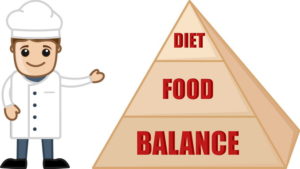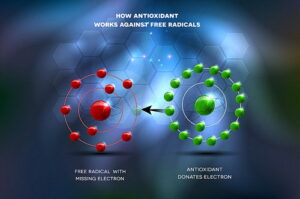Have you been feeling tired at work, losing concentration or having memory issues? These are signs that you may be suffering from sleep apnea. Although these symptoms could also be the result of a variety of ailments, we should not rule out this sleeping disorder.
If you get an hour or two less sleep than your normal routine, then you may be spending the rest of the day in a bad mood with an exhausted body. Consequently, fatigue affects your work performance and interaction with others and clouds your thought processes, not to mention that your driving ability can become severely impaired. Bottom line: Sleep disorders can be detrimental to your health.
One experience’s these negative effects whenever he or she is subject to a reduction in the quality or quantity of their sleep. The specific amount of mental and physical issues that a person will be affected with would be the result of the amount of lost sleep, diet, lifestyle and the individual’s own metabolism.
We all experience loss of sleep at one time or another; whether due to staying up late to study for final exams, going out until the wee hours of the morning or an anxiety-prone issue that keeps you awake at night. But there are also medical disorders that can keep us awake. Sleep apnea is one of them. It is the result of a disrupted breathing pattern while you are asleep. This pause in breathing is called apnea. On average, affected individuals experience around 30 apneas within an hour and most of us will not even be aware that we have it until we see a medical professional who needs to conduct specific apnea tests to confirm this is what we have.

As per a report from the American Sleep Apnea Association, there are more than 22 million US citizens suffering from this illness. Among these cases, 80% of them go unnoticed.
Physicians and researchers classify sleep apnea into two categories.
Obstructive Sleep Apnea
Obstructive sleep apnea (OSA) occurs when the air passage within the respiratory system gets blocked. There are several reasons which result in a partial or full blockade of the airway:
- Expanded and relaxed muscles of the tongue and throat
- Enlarged tonsils as compared to the windpipe
- Obesity is the other reason which blocks the air to lungs because being overweight constricts the inner diameter of the windpipe
A blocked air passage means the lungs are not able to oxygenate the blood. This anomaly activates a homeostatic response of the body which directs the brain to stir up the affected person from sleep in order to resurrect the air passage.
However, this awakening is very instantaneous and short. One doesn’t remember it in the morning. The resumption of breath is usually highlighted with a choking sound or a snort.
Central Sleep Apnea
This is a rare type of sleep apnea where the nervous system fails to communicate with the muscles responsible for breathing. Central sleep apnea can develop as a side effect of other health complications such as cardiovascular diseases, brain stem damage, and Parkinson’s disease.
Very few patients suffer from both of these simultaneously. This rare condition is called mixed sleep apnea.
Signs of Sleep Apnea
During Sleeping Hours
There is a widespread misunderstanding that snoring is the main sign of sleep apnea. However, this is not the case. Snoring can be the result of other issues, but sleep apnea should not be ruled out, especially if other symptoms materialize such as those listed below. Moreover, gasping and choking are also signs of sleep apnea. Frequently waking up during the night to urinate might be another sign of this sleep disorder; although this could be the result of other conditions, such as an enlarged prostate.
Post-Sleeping Hours

There are some other symptoms of sleep apnea that can be experienced throughout the day.
- Fatigue
- Severe headaches in the morning
- Failing to concentrate on any given task
- Feeling a sore throat and dry mouth after waking up
People who suffer from central sleep apnea suddenly wake up from sleep, feeling shortness of breath.
Many times sleep apnea goes undiagnosed because its symptoms appear at a time when it’s difficult to notice them.
Professional diagnosis of the problem is possible through a lab and home-based tests. If you are frequently encountering any of the aforementioned symptoms, then consult with a physician for better guidance.
Treatment is Available*

If you are suffering from moderate levels of sleep apnea then you may be able to manage it by making some lifestyle changes or improvements to your lifestyle. Let’s find out the self-help measures you can take to get reduce these interruptions of your sleep. *
- Maintaining a healthy BMI index is important for many reasons and protecting yourself from sleep apnea is one of them.
- Eating healthy food containing only good fats and carbs, lean proteins and regular physical activity prevents obesity to kick in.
- Smoking affects the muscles responsible for breathing. By reducing and quitting this habit, one can experience a decrement in the severity of sleep apnea.
- Sleeping on the side instead of the back also helps in preventing obstructive sleep apnea.

For severe cases of this disorder, a device is usually recommended by physicians called continuous positive airway pressure (CPAP). It pushes air through the nose and/or mouth via nose plugs or a mask, opening up the airflow to the lungs during sleep. There are other devices that can be used, but they are not for everyone. Medical technology is constantly changing and we recommend to Google sleep apnea devices (or equivalent search terms) to find out the latest state-of-the-art devices that can be used for helping you with sleep apnea.
*Note: The advice contained within this article is suggestive and is for informational purposes only. The information contained in this article should not be followed without the prior consultation of a medical professional!
















